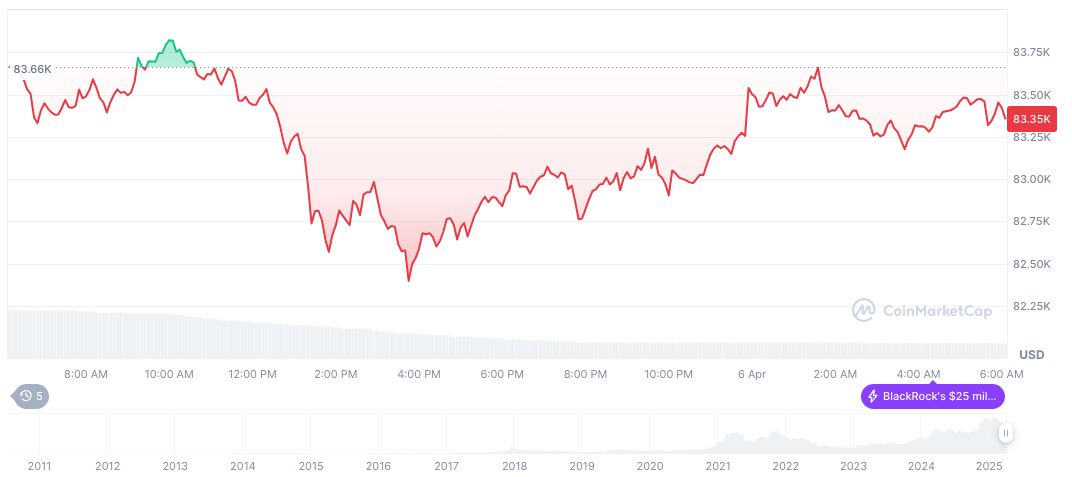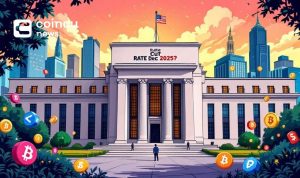- Goldman Sachs downgrades Q4 2025 U.S. GDP forecast to 0.5%.
- Recession risk rises from 35% to 45%.
- Increased uncertainty affects economic sentiment and capital spending.
BlockBeats News reports that Goldman Sachs, on April 7, 2025, revised its U.S. GDP growth projection to 0.5% for Q4 while raising the 12-month recession probability to 45%.
The forecast adjustment by Goldman Sachs highlights increased financial tightening and international policy uncertainties affecting economic outlooks.
Goldman Sachs Adjusts GDP Forecast Amid Tightening Conditions
Goldman Sachs, under Chief Economist Jan Hatzius, has revised its GDP growth forecast for Q4 2025 to 0.5%. The decision was influenced by tightening financial conditions, foreign consumer resistance, and rising policy uncertainty. These factors suggest a potential decrease in capital spending and broader economic challenges.
The report also indicates a rise in recession likelihood, now estimated at 45%. Economic sentiment has waned, with possible long-term implications for investment strategies. The shift reflects heightened caution and shows potential impacts on both domestic and global markets.
“The analysis cites tighter financial conditions, international consumer resistance, and heightened policy uncertainty as major challenges driving these changes.” — Jan Hatzius, Chief Economist, Goldman Sachs
Crypto Market Reacts to Economic Uncertainty
Did you know? Similar to the 2008 financial crisis, today’s economic uncertainties involve unique policy-driven risks and digital currency market impacts, illustrating interconnectedness.
As of April 7, 2025, Bitcoin (BTC) holds a market cap of $1.56 trillion, with prices adjusted to $78,598.73 following recent fluctuations. Over 24 hours, Bitcoin’s value dropped by 5.72%, while trading volume jumped 200.43%. Data sourced from CoinMarketCap illustrates the downturn in the last 90 days, marking a 22.84% decline.

Coincu’s research team anticipates that continuing financial instability could drive innovative responses in regulation and technology. Historical trends suggest adaptations might emerge, leading to potential sustainability in the crypto markets and finance in general.























